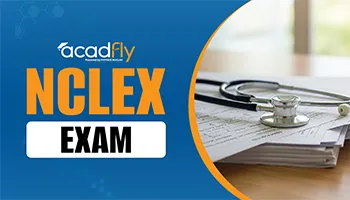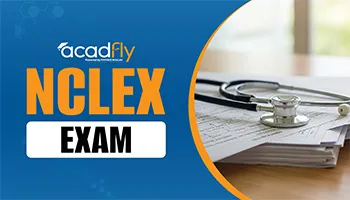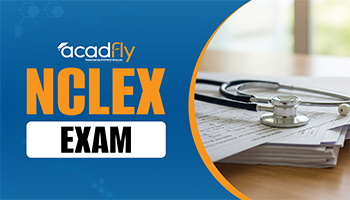


NCLEX exam is a special test that people take to become a nurse. The purpose of the exam is to assess whether or not a person is capable of safely caring for patients. Each and every nurse is required to pass the NCLEX before being able to practice. There are many different types of questions and the exam mainly centers around medical cases. Many students that enter into nursing school are already thinking of passing their NCLEX after completing school.
The NCLEX exam is a little different from what most people have experienced with tests in school. The reason for this is that this is an exam to become a nurse, where nurses care for sick people. Nurses must be able to make good judgments, provide relief for patients, and ensure everyone is safe at a hospital or clinic. Passing the NCLEX exam gives everyone proof that the nurse is ready for real-life nursing situations.
NCLEX Exam Overview
The NCLEX (National Council Licensure Examination) is a standardized exam for nursing graduates. It is used in the United States, Canada and Australia. The exam helps determine if a candidate is able to safely and effectively apply the knowledge, skill, and critical thinking required for nursing practice. There are two versions of NCLEX - NCLEX-RN for Registered Nurses, NCLEX-PN for Practical/Vocational Nurses.
NCLEX Exam Pattern
NCLEX Exam Pattern employs Computerized Adaptive Testing (CAT) technology. The exam questions are adaptive, meaning the difficulty level is adjusted based on the candidate's responses. It tests critical thinking, decision-making, and clinical reasoning.
| NCLEX Exam Overview | |
| Particulars | Details |
| Exam Name | National Council Licensure Examination (NCLEX) |
| Conducting Body | National Council of State Boards of Nursing (NCSBN) |
| Types of Exams | NCLEX-RN (Registered Nurse), NCLEX-PN (Practical Nurse) |
| Mode of Exam | Computer-Based Adaptive Testing (CAT) |
| Duration | Up to 5 hours (including breaks) |
| Number of Questions | 85 to 150 for NCLEX-RN; 85 to 150 for NCLEX-PN |
| Question Types | Multiple Choice, Fill-in-the-blank, Hot Spot, Drag and Drop, and Case Studies |
| Medium of Exam | English |
| Passing Standard | Variable; determined by NCSBN based on candidate’s ability level |
| Result | Pass or Fail (no numerical score given) |
| Validity | Once passed, valid for lifetime (depending on state licensing requirements) |
NCLEX Exam Dates
The NCLEX is offered every day like a college final exam; it is not offered on set specific dates. The NCLEX is offered year round at Pearson VUE testing centers, seven days a week.
-
Scheduling: After you have received your Authorization to Test (ATT), you will schedule your date and time with Pearson VUE on their website.
-
Dates: The dates are offered based on availability of each testing center and their hours of operation. Your exam must be scheduled within the time frame allowed on your ATT.
-
Advice: It is recommended that you schedule your exam date as soon as you receive your ATT in order to get a date that you prefer and to avoid the possibility of your ATT expiring.
NCLEX Exam Requirements
Pearson VUE, an NCLEX-approved, computer-based testing service, administers NCLEX on behalf of the NCSBN. There are two main requirements, with two separate steps/organizations involved:
Education and Licensure Application (Nursing Regulatory Body - NRB)
-
Graduation: You must graduate from a nursing education program approved/accredited by a Nursing Regulatory Body (NRB), most often a State Board of Nursing (BON).
-
NCLEX-RN: Requires Associate Degree in Nursing (ADN), Bachelor of Science in Nursing (BSN), or diploma from an approved nursing program.
-
NCLEX-PN: Requires Practical Nursing Diploma or certificate from an approved practical/vocational nursing program.
-
Apply for Licensure: You must apply to an NRB in the state/jurisdiction you wish to practice, to take the licensure/registration exam (NRB fees apply). Often this includes:
-
Official transcript submission.
-
Criminal background check (completion of fingerprinting in most states).
-
Fulfillment of any specific requirements of the state (international graduates may need to meet English proficiency requirements).
Exam Registration (Pearson VUE)
-
Register with Pearson VUE: After students are approved by the NRB (or at the same time, procedures vary by state) students will register with Pearson VUE and pay the NCLEX exam fee.
-
Authorization to Test (ATT): Once the NRB has confirmed your eligibility and Pearson VUE has processed the exam registration fee, you will be emailed an Authorization to Test (ATT).
-
The ATT is needed to schedule and take the exam.
-
The ATT expires (generally 90 days). You must take the exam within this time period, or re-register and pay the exam fee again.
NCLEX Exam Cost
The NCLEX Exam cost varies depending on location:
-
Base Registration Fee: USD $200 (through Pearson VUE).
-
Additional Fees: International scheduling or changes may cost extra (around $150–$200).
-
Licensure Application Fees: Each state or country has its own separate licensure fee.
Make sure to check the NCSBN and your state nursing board website for updated cost details.
NCLEX Exam Questions Type
The NCLEX includes various question types to test different skills and knowledge areas.
| NCLEX Exam Questions Type | |
| Question Type | What It Means |
| Multiple Choice | Choose one correct answer out of several |
| Multiple Response | Choose more than one answer at a time |
| Fill in the Blank | Write the correct answer |
| Hot Spot | Click on part of a picture or diagram |
| Ordered Response | Put steps in the correct order |
| Chart/Exhibit | Use charts or pictures to answer |
| Audio | Listen and then answer |
NCLEX Exam Pass Rate
NCLEX pass rates are typically published by the NCSBN and vary based on the type of exam (RN/PN), the candidate's educational location (U.S.-educated vs. internationally-educated), and whether they are a first-time or repeat test-taker.
-
NCLEX-RN First-Time, U.S.-Educated Candidates: In recent periods (e.g., Q1 of a recent year), the pass rate is often in the 85%−90% range.
-
NCLEX-RN Repeat Candidates (All Education): This rate is significantly lower, often in the 40%−50% range.
-
NCLEX-RN Internationally-Educated Candidates (First-Time): This rate is also often lower than their U.S.-educated counterparts, sometimes in the 50%−60% range.
NCLEX Exam FAQs
Q1. For what purpose is the NCLEX exam conducted?
Q2. How much does the NCLEX exam cost?
Q3. How long does the NCLEX exam last?
Q4. How can I prepare for the NCLEX exam?
Q5. What is the pass rate of the NCLEX exam?










